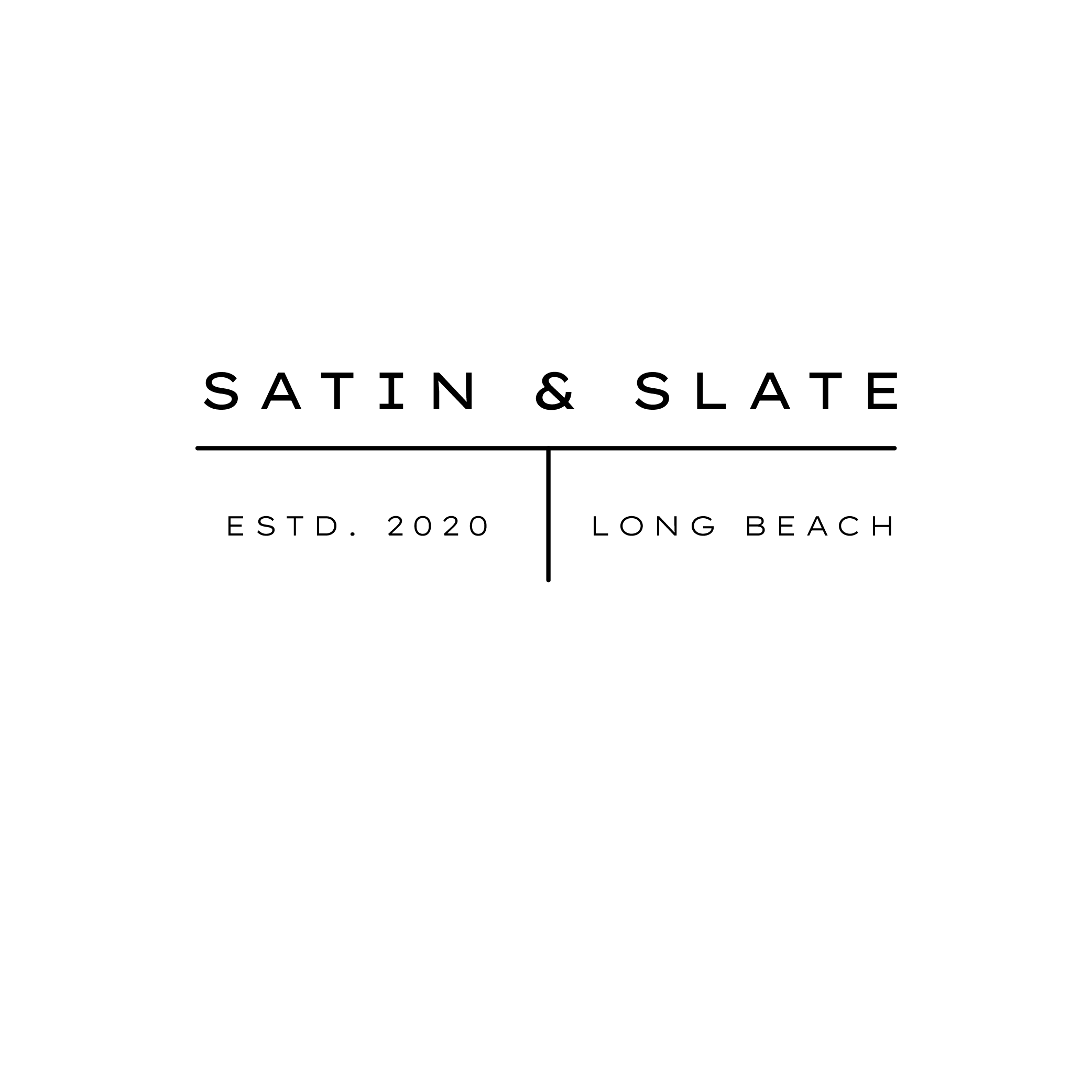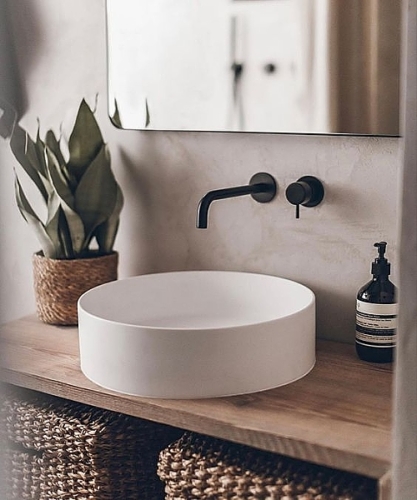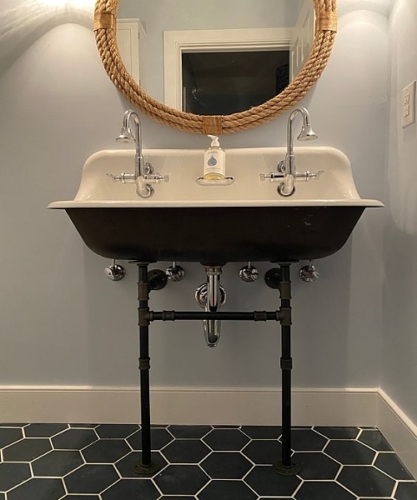Selecting the right bathroom sink material is a pivotal decision that can significantly impact both the functionality and aesthetics of your bathroom. With a plethora of sink materials available in the market, each boasts its unique set of advantages and drawbacks.
Whether you’re embarking on a bathroom renovation or building a new home, understanding the pros and cons of different sink materials is essential. Your choice not only influences the overall design but also determines how well your sink will stand up to daily use.
So, let’s explore these materials in detail to ensure you find the perfect balance of style and practicality for your bathroom.
- Porcelain/Ceramic Sinks
- Stainless Steel Sinks
- Cast Iron Sinks
- Glass Sinks
- Stone Sinks
- Solid Surface Sinks
- Acrylic Sinks
- Copper Sinks
1. Porcelain/Ceramic Sinks
Pros
- Classic Look: Porcelain and ceramic sinks are timeless and can complement a wide range of bathroom styles.
- Affordable: They are generally more budget-friendly compared to some other materials.
- Easy to Clean: Porcelain and ceramic are non-porous, making them easy to clean and resistant to stains.
Cons
- Prone to Chipping: These sinks can chip or crack if heavy objects are dropped on them.
- Limited Durability: Over time, porcelain sinks may develop small surface cracks and stains.
- Susceptible to Scratches: While they are resistant to stains, they can be scratched by abrasive materials.
2. Stainless Steel Sinks
Pros
- Durability: Stainless steel sinks are highly durable and resistant to chipping, cracking, and staining.
- Sleek and Modern: They have a contemporary, minimalist appearance that suits modern bathroom designs.
- Easy Maintenance: These sinks are low-maintenance and can be easily cleaned with common household products.
Cons
- Can Be Noisy: Stainless steel sinks can be noisy when water hits the metal surface.
- Susceptible to Scratches: While they are durable, they can still get scratched, which may be more noticeable on the shiny surface.
- May Show Water Spots: Stainless steel can show water spots and fingerprints, requiring frequent cleaning for a pristine look.
3. Cast Iron Sinks
Pros
- Classic and Elegant: Cast iron sinks are known for their classic, elegant appearance and often come with enamel coatings in various colors.
- Durability: They are highly durable and resistant to chipping, scratching, and staining.
- Heat Resistance: Cast iron sinks can withstand high temperatures, making them ideal for hot water.
Cons
- Heavy: Cast iron sinks are incredibly heavy, which may require extra support during installation.
- Expensive: They are typically more expensive than other sink materials.
- Can Chip if Enamel is Damaged: If the enamel coating is chipped or damaged, the underlying cast iron can rust over time.
4. Glass Sinks
Pros
- Unique Aesthetics: Glass sinks offer a striking and unique appearance, often available in various colors and designs.
- Easy to Clean: They are non-porous and easy to clean, resisting stains and discoloration.
- Versatile: Glass sinks can complement both modern and traditional bathroom designs.
Cons
- Fragile: Glass sinks are fragile and can shatter if subjected to significant impact or temperature changes.
- Scratch-Prone: They can be scratched by abrasive materials, which may affect their appearance over time.
- Cost: Glass sinks tend to be more expensive than some other materials.
5. Stone Sinks (e.g., Granite, Marble)
Pros
- Natural Beauty: Stone sinks exude natural beauty and unique patterns, making them a focal point in any bathroom.
- Durability: They are incredibly durable and resistant to chipping, scratching, and staining.
- Heat Resistance: Stone sinks can handle high temperatures without damage.
Cons
- High Maintenance: Stone sinks require regular sealing to maintain their appearance and prevent staining.
- Heavy: Like cast iron sinks, stone sinks are heavy and may require additional support during installation.
- Cost: Stone sinks are typically more expensive than other options, and the price can vary widely based on the type of stone.
6. Solid Surface Sinks (e.g., Corian)
Pros
- Seamless Design: Solid surface sinks can be integrated seamlessly into the countertop for a sleek, modern look.
- Stain-Resistant: They are highly stain-resistant and easy to clean.
- Customizable: You can choose from a variety of colors and shapes to match your bathroom design.
Cons
- Vulnerable to Scratches: Solid surface sinks can be scratched, although minor scratches can often be repaired.
- Not Heat-Resistant: They are not as heat-resistant as some other materials, so hot objects can cause damage.
- Cost: Solid surface sinks are generally more expensive than porcelain or stainless steel sinks.
7. Acrylic Sinks
Pros
- Affordable: Acrylic sinks are often more budget-friendly compared to other materials.
- Design Flexibility: The moldable nature of acrylic allows for diverse sink designs.
- Ease of Maintenance: They are easy to clean, and acrylic can dampen sound for a quieter experience.
Cons
- Durability: Acrylic sinks are not as durable and can be susceptible to scratches and damage.
- Heat Sensitivity: They are not highly heat-resistant and require care with hot objects.
- Not Suitable for Kitchens: Acrylic is not suited for heavy-duty kitchen use.
8. Copper Sinks
Pros
- Exceptional Aesthetics: Copper sinks are visually stunning and add uniqueness to any bathroom.
- Antimicrobial: Copper’s natural properties make it hygienic and antimicrobial.
- Corrosion-Resistant: They resist corrosion and rust, ensuring long-lasting appeal.
- Nonporous: Copper sinks do not absorb liquids, making them stain-resistant.
- Longevity: Proper care can extend the lifespan of copper sinks for a lifetime.
Cons
- Costly: Copper sinks are among the more expensive options.
- Not Suitable for Hard Water: They are not ideal for areas with hard water, as mineral deposits can stain copper.
- Maintenance: Regular upkeep is required to preserve the natural patina.
- Sensitivity to Certain Substances: Copper can react with substances like acidic foods, cosmetics, and drain cleaners, affecting its appearance.
In conclusion, selecting the right bathroom sink material is a decision that should not be taken lightly. Also, each material we’ve explored in this comprehensive guide offers a unique blend of advantages and disadvantages. Besides, this makes it crucial to align your choice with your specific preferences and the demands of your bathroom space. By carefully weighing the pros and cons of each material, you can make an informed decision. Thus, it ensures that your bathroom sink becomes a seamless and stylish addition to your home.
Check out 8 Tips Choosing the Best Bathtub for Your Los Angeles Home for more inspirational ideas.

Satin & Slate Logo
About Us:
Founded in 2017, Satin and Slate is one of the elite interior design studios in Southern California. Located in Long Beach, this dedicated team of designers oversees from kitchen and bathroom renovations to commercial projects. Equipped with their own showroom/studio they can satisfy the needs of any client. Featuring clean lines, bright colors and fresh ideas Satin and Slate’s mission is to bring your vision to life and help transform your space into something extraordinary.












